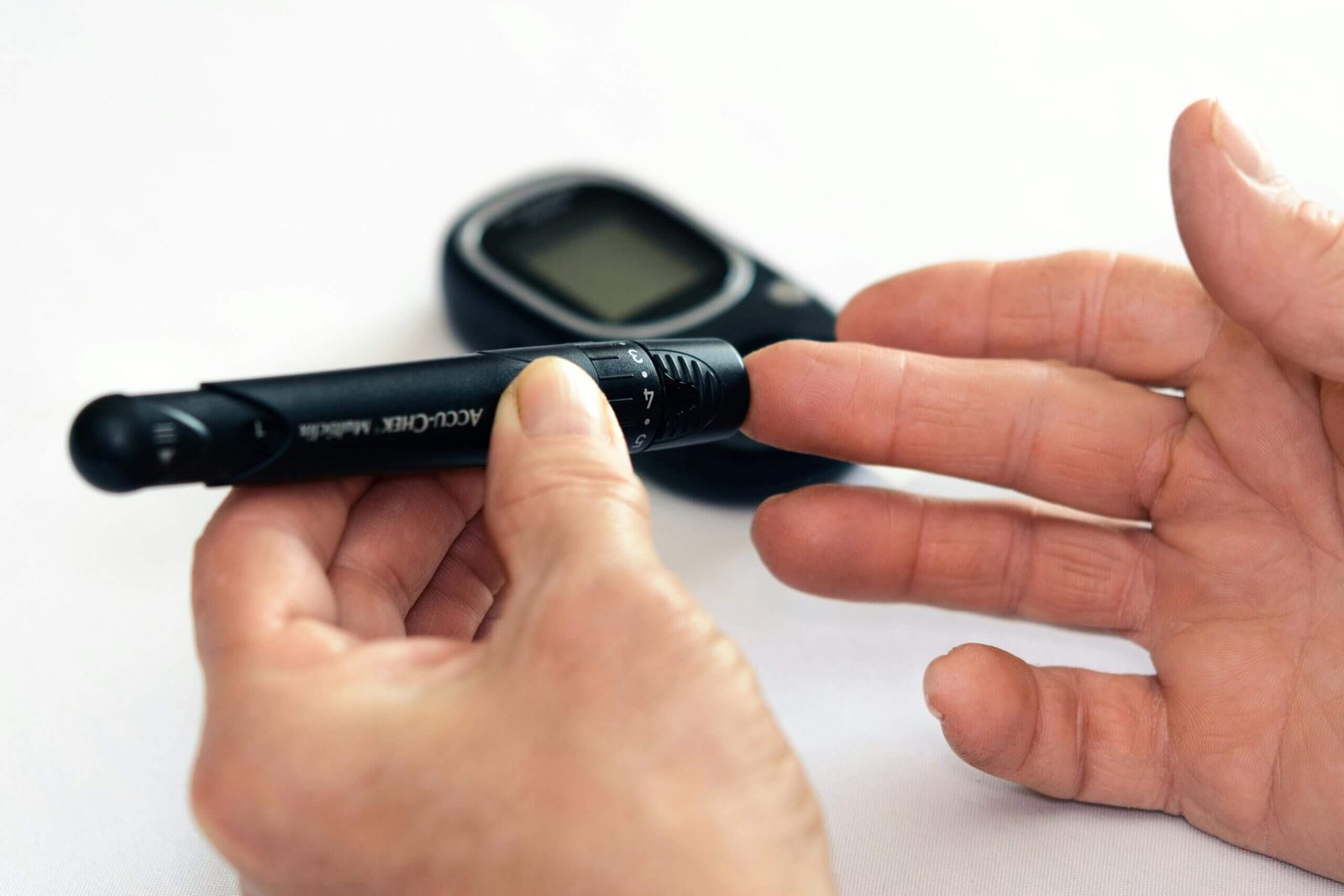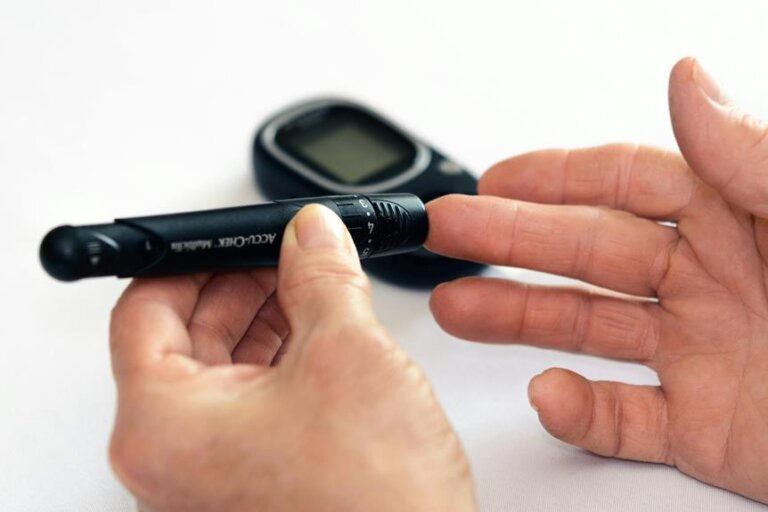diabetes what is the most common complication
Diabetes is a chronic disease that affects millions of people worldwide. According to the World Health Organization, approximately 422 million adults were living with diabetes in 2014, and this number is expected to rise to 522 million by 2030. This disease occurs when the body is unable to produce or effectively use insulin, a hormone that regulates blood sugar levels. As a result, individuals with diabetes have elevated levels of glucose in their blood, which can lead to various complications.to get rid of diabetes click here While there are several potential complications associated with diabetes, one stands out as the most common and can significantly impact an individual’s quality of life. In this article, we will explore this complication in detail, its prevalence, risk factors, and how to prevent and manage it effectively. Understanding the most common complication of diabetes is crucial for individuals living with this disease, their loved ones, and healthcare professionals. So, let us delve into the world of diabetes and uncover the most common complication that afflicts those with this condition.
Diabetes’ most common complication: neuropathy
Neuropathy, a prevalent complication associated with diabetes, occurs when high blood sugar levels damage the nerves, resulting in a variety of distressing symptoms. The most commonly affected areas include the feet and legs, although neuropathy can also impact other parts of the body. Individuals with diabetes may experience tingling or numbness in the affected areas, as well as burning or shooting pain. In addition to these physical symptoms, neuropathy can lead to difficulties with balance and coordination, making daily activities challenging and increasing the risk of falls. Consequently, managing blood sugar levels and adopting a comprehensive approach to diabetes care are vital in preventing and mitigating the onset and progression of neuropathy.
High blood sugar leads to damage
Consistently elevated levels of blood sugar in individuals with diabetes can have far-reaching consequences throughout the body. Over time, this sustained high blood sugar can lead to damage in various organs and systems. For instance, the cardiovascular system may be affected, increasing the risk of heart disease and stroke. The kidneys, crucial for filtering waste from the blood, can be damaged, potentially leading to kidney failure. Additionally, the eyes, particularly the blood vessels within the retina, can suffer damage, potentially causing vision problems or even blindness. Furthermore, high blood sugar can impair the body’s ability to heal wounds, leading to delayed healing and an increased risk of infections. It is imperative for individuals with diabetes to carefully manage their blood sugar levels to minimize the risk of these debilitating complications and maintain optimal health.
Nerve damage causes tingling sensations
Nerve damage, known as diabetic neuropathy, is a common complication of diabetes that affects the peripheral nerves, most commonly in the feet and hands. This damage occurs due to prolonged exposure to high blood sugar levels, which can result in impaired nerve function. One prevalent symptom of diabetic neuropathy is tingling sensations, often described as pins and needles. These sensations can range from mild to severe and may be accompanied by numbness or a loss of sensation. It is important for individuals with diabetes to be aware of these symptoms and seek appropriate medical attention, as untreated nerve damage can lead to further complications and impairments in motor function. Proper management of blood sugar levels and regular monitoring can help prevent or minimize the progression of nerve damage and alleviate the discomfort of tingling sensations.
Loss of sensation in extremities
Loss of sensation in extremities, particularly in the feet and hands, is a significant concern for individuals with diabetes. This condition, known as peripheral neuropathy, is a result of nerve damage caused by prolonged exposure to high blood sugar levels. Without proper sensation, individuals may be unaware of injuries or wounds on their extremities, which can lead to serious infections and complications. Regular monitoring of blood sugar levels, implementing a comprehensive foot care routine, and seeking prompt medical attention can help prevent and manage the loss of sensation in extremities. It is essential for individuals with diabetes to prioritize their foot and hand health to minimize the risk of further complications and maintain their overall well-being.
Increased risk of foot ulcers
Foot ulcers are a common and concerning complication that individuals with diabetes may face. Due to reduced blood flow and impaired nerve function, even minor injuries or pressure points on the feet can become serious problems. The increased risk of foot ulcers stems from the combination of peripheral neuropathy and vascular complications often associated with diabetes. These ulcers can be slow to heal, making them susceptible to infection, and may even lead to more severe complications such as cellulitis or osteomyelitis. Therefore, it is crucial for individuals with diabetes to prioritize regular foot examinations, proper foot care, and seek immediate medical attention for any signs of potential ulcers to prevent the development of further complications and maintain optimal foot health.
Vision problems from diabetic retinopathy
Diabetic retinopathy is a significant concern among individuals with diabetes, as it can lead to vision problems and even blindness if left untreated. This condition affects the blood vessels in the retina, the light-sensitive tissue at the back of the eye. Over time, the high levels of blood sugar associated with diabetes can cause these blood vessels to become damaged and leak fluid or bleed. As a result, the retina may swell, leading to blurred or distorted vision. In advanced stages, new blood vessels may grow on the surface of the retina, which can further impair vision and potentially result in retinal detachment. Regular eye examinations and early detection are vital to managing diabetic retinopathy and preserving vision. By maintaining optimal blood sugar levels and seeking appropriate treatment, individuals with diabetes can reduce the risk of developing vision problems associated with this condition. more articles click here
Kidney damage from high glucose
Kidney damage, also known as diabetic nephropathy, is a significant complication that can occur in individuals with diabetes. This condition occurs when the high glucose levels in the blood over an extended period of time damage the small blood vessels in the kidneys. The kidneys play a crucial role in filtering waste products and excess fluids from the body, but when they are damaged, their ability to perform this function is compromised. Initially, there may be no noticeable symptoms, but as the damage progresses, individuals may experience swelling in the legs and ankles, increased urination, fatigue, and decreased appetite. It is important for individuals with diabetes to closely monitor their blood sugar levels, maintain a healthy blood pressure, and receive regular check-ups to detect and manage any signs of kidney damage early on. By taking proactive steps to manage diabetes and control blood glucose levels, the risk of developing kidney damage can be significantly reduced.
Managing diabetes crucial for prevention
Managing diabetes is crucial for the prevention of various complications that can arise from this chronic condition. Diabetes, whether it is type 1 or type 2, requires careful management to maintain stable blood sugar levels. Consistently high blood sugar levels can lead to an increased risk of cardiovascular diseases, nerve damage, eye problems, and poor wound healing. By diligently monitoring blood sugar levels, following a balanced and nutritious diet, engaging in regular physical activity, and taking prescribed medications as directed by healthcare professionals, individuals with diabetes can significantly reduce the risk of developing these complications. Additionally, regular visits to healthcare providers for comprehensive check-ups and receiving proper education on diabetes self-management are essential for maintaining optimal health. Taking proactive steps in managing diabetes not only improves the quality of life for individuals living with the condition but also helps to prevent potential complications from arising.
In conclusion, it is evident that the most common complication of diabetes is hyperglycemia. This condition occurs when the body’s blood sugar levels are consistently high, leading to a variety of serious health issues. It is important for those living with diabetes to closely monitor their blood sugar levels and adhere to their treatment plan in order to prevent and manage hyperglycemia. By staying informed and proactive, individuals with diabetes can minimize the risk of developing this common complication and maintain their overall health and well-being.
FAQ
What is the most common complication of diabetes and how does it affect the body?
The most common complication of diabetes is cardiovascular disease. This occurs when high levels of blood glucose damage blood vessels and nerves over time, increasing the risk of heart attacks, stroke, and other heart-related issues. The impact on the body includes reduced circulation, nerve damage, and an increased risk of blood clots, all of which can have serious consequences on overall health and quality of life. Managing blood sugar levels and leading a healthy lifestyle can help reduce the risk of developing cardiovascular complications associated with diabetes.
What are the risk factors for developing the most common complication of diabetes?
The most common complications of diabetes, such as cardiovascular disease, neuropathy, and retinopathy, are often influenced by risk factors like poor blood sugar control, high blood pressure, high cholesterol levels, smoking, obesity, and a sedentary lifestyle. These factors can contribute to the development and progression of complications, highlighting the importance of managing diabetes through proper medication, regular monitoring, healthy lifestyle choices, and adherence to medical advice.
How can individuals with diabetes prevent or manage the most common complication?
Individuals with diabetes can prevent or manage the most common complication, which is diabetic retinopathy, by maintaining good blood sugar control through diet, exercise, and medication as prescribed by their healthcare provider. Regular eye exams, blood pressure monitoring, and maintaining a healthy lifestyle are also important in preventing or managing diabetic retinopathy. In some cases, treatments such as laser therapy or injections may be necessary. Early detection and intervention are key in preventing vision loss associated with this complication.

Are there any warning signs or symptoms that indicate someone with diabetes may be developing the most common complication?
Some warning signs or symptoms that may indicate someone with diabetes is developing the most common complication, diabetic neuropathy, include numbness or tingling in the hands or feet, sharp stabbing pain, muscle weakness, problems with coordination, and sensitivity to touch. It is important for individuals with diabetes to monitor their blood sugar levels regularly, maintain a healthy lifestyle, and seek medical attention if they experience any of these symptoms. Early detection and management of diabetic neuropathy can help prevent further complications and improve quality of life.
How does proper blood sugar control play a role in reducing the risk of the most common complication of diabetes?
Proper blood sugar control is essential in reducing the risk of diabetic complications, particularly diabetic neuropathy. By maintaining stable blood sugar levels, the risk of nerve damage and related complications decreases significantly. Consistently high blood sugar levels can damage blood vessels and nerves over time, leading to neuropathy symptoms such as tingling, numbness, and pain. By closely monitoring and managing blood sugar levels through medication, diet, and lifestyle changes, individuals with diabetes can lower their risk of developing diabetic neuropathy and other associated complications click here click here






